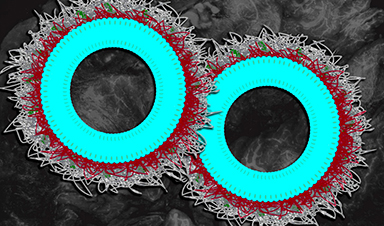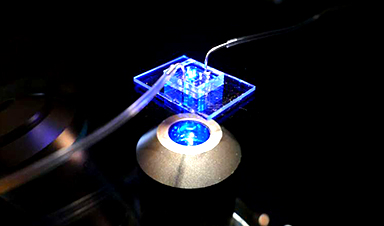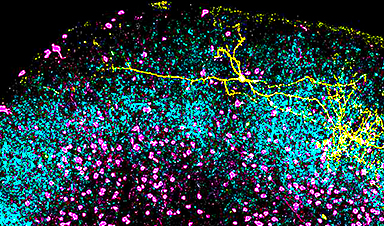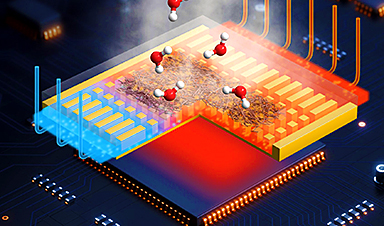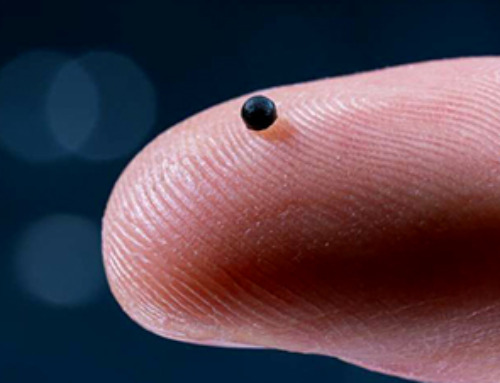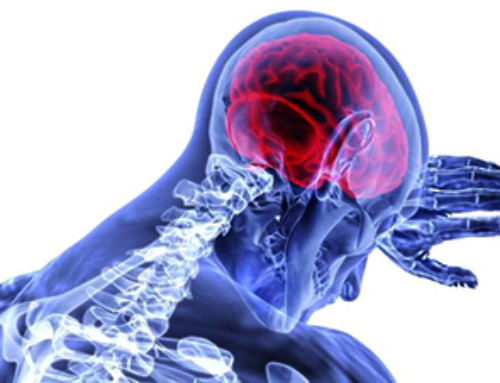Generative AI, which is currently riding a crest of popular discourse, promises a world where the simple transforms into the complex — where a simple distribution evolves into intricate patterns of images, sounds, or text, rendering the artificial startlingly real.
The realms of imagination no longer remain as mere abstractions, as researchers from MIT's Computer Science and Artificial Intelligence Laboratory (CSAIL) have brought an innovative AI model to life. Their new technology integrates two seemingly unrelated physical laws that underpin the best-performing generative models to date: diffusion, which typically illustrates the random motion of elements, like heat permeating a room or a gas expanding into space, and Poisson Flow, which draws on the principles governing the activity of electric charges.
A New Model Emerges
This harmonious blend has resulted in superior performance in generating new images, outpacing existing state-of-the-art models. Since its inception, the "Poisson Flow Generative Model ++" (PFGM++) has found potential applications in various fields, from antibody and RNA sequence generation to audio production and graph generation.
The model can generate complex patterns, like creating realistic images or mimicking real-world processes. PFGM++ builds off of PFGM, the team's work from the prior year. PFGM takes inspiration from the means behind the mathematical equation known as the "Poisson" equation, and then applies it to the data the model tries to learn from. To do this, the team used a clever trick: They added an extra dimension to their model's "space," kind of like going from a 2D sketch to a 3D model. This extra dimension gives more room for maneuvering, places the data in a larger context, and helps one approach the data from all directions when generating new samples.
"PFGM++ is an example of the kinds of AI advances that can be driven through interdisciplinary collaborations between physicists and computer scientists," says Jesse Thaler, theoretical particle physicist in MIT's Laboratory for Nuclear Science's Center for Theoretical Physics and director of the National Science Foundation's AI Institute for Artificial Intelligence and Fundamental Interactions (NSF AI IAIFI), who was not involved in the work.
"In recent years, AI-based generative models have yielded numerous eye-popping results, from photorealistic images to lucid streams of text. Remarkably, some of the most powerful generative models are grounded in time-tested concepts from physics, such as symmetries and thermodynamics. PFGM++ takes a century-old idea from fundamental physics — that there might be extra dimensions of space-time — and turns it into a powerful and robust tool to generate synthetic but realistic datasets. I'm thrilled to see the myriad of ways 'physics intelligence' is transforming the field of artificial intelligence."
Underlying Mechanics
The underlying mechanism of PFGM isn't as complex as it might sound. The researchers compared the data points to tiny electric charges placed on a flat plane in a dimensionally expanded world. These charges produce an "electric field," with the charges looking to move upwards along the field lines into an extra dimension and consequently forming a uniform distribution on a vast imaginary hemisphere. The generation process is like rewinding a videotape: starting with a uniformly distributed set of charges on the hemisphere and tracking their journey back to the flat plane along the electric lines, they align to match the original data distribution. This intriguing process allows the neural model to learn the electric field, and generate new data that mirrors the original.
The PFGM++ model extends the electric field in PFGM to an intricate, higher-dimensional framework. When you keep expanding these dimensions, something unexpected happens — the model starts resembling another important class of models, the diffusion models. This work is all about finding the right balance. The PFGM and diffusion models sit at opposite ends of a spectrum: one is robust but complex to handle, the other simpler but less sturdy. The PFGM++ model offers a sweet spot, striking a balance between robustness and ease of use. This innovation paves the way for more efficient image and pattern generation, marking a significant step forward in technology. Along with adjustable dimensions, the researchers proposed a new training method that enables more efficient learning of the electric field.
Putting Theory to the Test
To bring this theory to life, the team resolved a pair of differential equations detailing these charges' motion within the electric field. They evaluated the performance using the Frechet Inception Distance (FID) score, a widely accepted metric that assesses the quality of images generated by the model in comparison to the real ones. PFGM++ further showcases a higher resistance to errors and robustness toward the step size in the differential equations.
Looking ahead, they aim to refine certain aspects of the model, particularly in systematic ways to identify the "sweet spot" value of D tailored for specific data, architectures, and tasks by analyzing the behavior of estimation errors of neural networks. They also plan to apply the PFGM++ to the modern large-scale text-to-image/text-to-video generation.
Industry Feedback
"Diffusion models have become a critical driving force behind the revolution in generative AI," says Yang Song, research scientist at OpenAI. "PFGM++ presents a powerful generalization of diffusion models, allowing users to generate higher-quality images by improving the robustness of image generation against perturbations and learning errors. Furthermore, PFGM++ uncovers a surprising connection between electrostatics and diffusion models, providing new theoretical insights into diffusion model research."
"Poisson Flow Generative Models do not only rely on an elegant physics-inspired formulation based on electrostatics, but they also offer state-of-the-art generative modeling performance in practice," says NVIDIA Senior Research Scientist Karsten Kreis, who was not involved in the work.
"They even outperform the popular diffusion models, which currently dominate the literature. This makes them a very powerful generative modeling tool, and I envision their application in diverse areas, ranging from digital content creation to generative drug discovery. More generally, I believe that the exploration of further physics-inspired generative modeling frameworks holds great promise for the future and that Poisson Flow Generative Models are only the beginning."
Reference: "PFGM++: Unlocking the Potential of Physics-Inspired Generative Models" by Yilun Xu, Ziming Liu, Yonglong Tian, Shangyuan Tong, Max Tegmark and Tommi Jaakkola, 10 February 2023, Computer Science > Machine Learning.
arXiv:2302.04265
Authors on a paper about this work include three MIT graduate students: Yilun Xu of the Department of Electrical Engineering and Computer Science (EECS) and CSAIL, Ziming Liu of the Department of Physics and the NSF AI IAIFI, and Shangyuan Tong of EECS and CSAIL, as well as Google Senior Research Scientist Yonglong Tian PhD '23. MIT professors Max Tegmark and Tommi Jaakkola advised the research.
The team was supported by the MIT-DSTA Singapore collaboration, the MIT-IBM Watson AI Lab, National Science Foundation grants, The Casey and Family Foundation, the Foundational Questions Institute, the Rothberg Family Fund for Cognitive Science, and the ML for Pharmaceutical Discovery and Synthesis Consortium. Their work was presented at the International Conference on Machine Learning this summer.
News
Vision can be rebooted in adults with amblyopia, study suggests
Temporarily anesthetizing the retina briefly reverts the activity of the visual system to that observed in early development and enables growth of responses to the amblyopic eye, new research shows. In the common vision [...]
Ultrasound-activated Nanoparticles Kill Liver Cancer and Activate Immune System
A new ultrasound-guided nanotherapy wipes out liver tumors while training the immune system to keep them from coming back. The study, published in Nano Today, introduces a biodegradable nanoparticle system that combines sonodynamic therapy and cell [...]
Magnetic nanoparticles that successfully navigate complex blood vessels may be ready for clinical trials
Every year, 12 million people worldwide suffer a stroke; many die or are permanently impaired. Currently, drugs are administered to dissolve the thrombus that blocks the blood vessel. These drugs spread throughout the entire [...]
Reviving Exhausted T Cells Sparks Powerful Cancer Tumor Elimination
Scientists have discovered how tumors secretly drain the energy from T cells—the immune system’s main cancer fighters—and how blocking that process can bring them back to life. The team found that cancer cells use [...]
Very low LDL-cholesterol correlates to fewer heart problems after stroke
Brigham and Women's Hospital's TIMI Study Group reports that in patients with prior ischemic stroke, very low achieved LDL-cholesterol correlated with fewer major adverse cardiovascular events and fewer recurrent strokes, without an apparent increase [...]
“Great Unified Microscope” Reveals Hidden Micro and Nano Worlds Inside Living Cells
University of Tokyo researchers have created a powerful new microscope that captures both forward- and back-scattered light at once, letting scientists see everything from large cell structures to tiny nanoscale particles in a single shot. Researchers [...]
Breakthrough Alzheimer’s Drug Has a Hidden Problem
Researchers in Japan found that although the Alzheimer’s drug lecanemab successfully removes amyloid plaques from the brain, it does not restore the brain’s waste-clearing system within the first few months of treatment. The study suggests that [...]
Concerning New Research Reveals Colon Cancer Is Skyrocketing in Adults Under 50
Colorectal cancer is striking younger adults at alarming rates, driven by lifestyle and genetic factors. Colorectal cancer (CRC) develops when abnormal cells grow uncontrollably in the colon or rectum, forming tumors that can eventually [...]
Scientists Discover a Natural, Non-Addictive Way To Block Pain That Could Replace Opioids
Scientists have discovered that the body can naturally dull pain through its own localized “benzodiazepine-like” peptides. A groundbreaking study led by a University of Leeds scientist has unveiled new insights into how the body manages pain, [...]
GLP-1 Drugs Like Ozempic Work, but New Research Reveals a Major Catch
Three new Cochrane reviews find evidence that GLP-1 drugs lead to clinically meaningful weight loss, though industry-funded studies raise concerns. Three new reviews from Cochrane have found that GLP-1 medications can lead to significant [...]
How a Palm-Sized Laser Could Change Medicine and Manufacturing
Researchers have developed an innovative and versatile system designed for a new generation of short-pulse lasers. Lasers that produce extremely short bursts of light are known for their remarkable precision, making them indispensable tools [...]
New nanoparticles stimulate the immune system to attack ovarian tumors
Cancer immunotherapy, which uses drugs that stimulate the body’s immune cells to attack tumors, is a promising approach to treating many types of cancer. However, it doesn’t work well for some tumors, including ovarian [...]
New Drug Kills Cancer 20,000x More Effectively With No Detectable Side Effects
By restructuring a common chemotherapy drug, scientists increased its potency by 20,000 times. In a significant step forward for cancer therapy, researchers at Northwestern University have redesigned the molecular structure of a well-known chemotherapy drug, greatly [...]
Lipid nanoparticles discovered that can deliver mRNA directly into heart muscle cells
Cardiovascular disease continues to be the leading cause of death worldwide. But advances in heart-failure therapeutics have stalled, largely due to the difficulty of delivering treatments at the cellular level. Now, a UC Berkeley-led [...]
The basic mechanisms of visual attention emerged over 500 million years ago, study suggests
The brain does not need its sophisticated cortex to interpret the visual world. A new study published in PLOS Biology demonstrates that a much older structure, the superior colliculus, contains the necessary circuitry to perform the [...]
AI Is Overheating. This New Technology Could Be the Fix
Engineers have developed a passive evaporative cooling membrane that dramatically improves heat removal for electronics and data centers Engineers at the University of California San Diego have created an innovative cooling system designed to greatly enhance [...]












